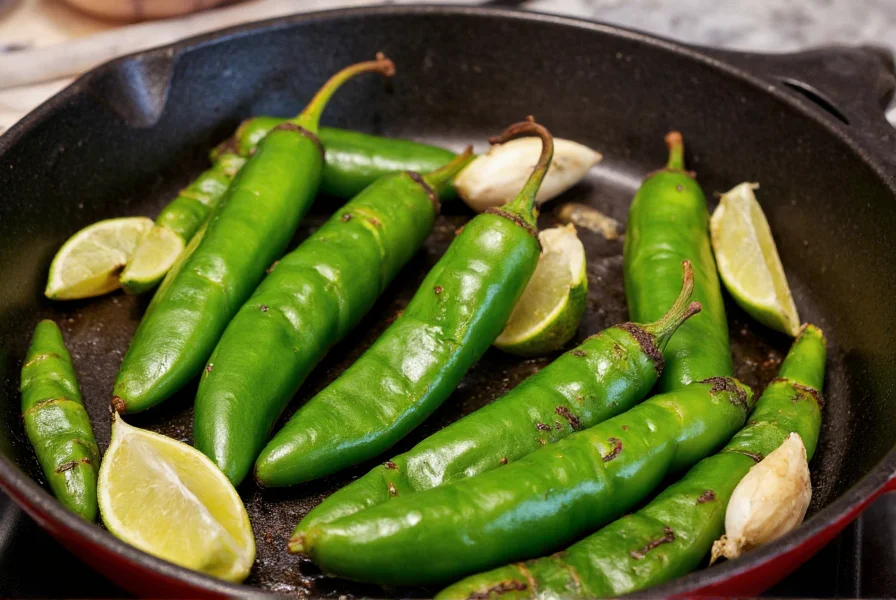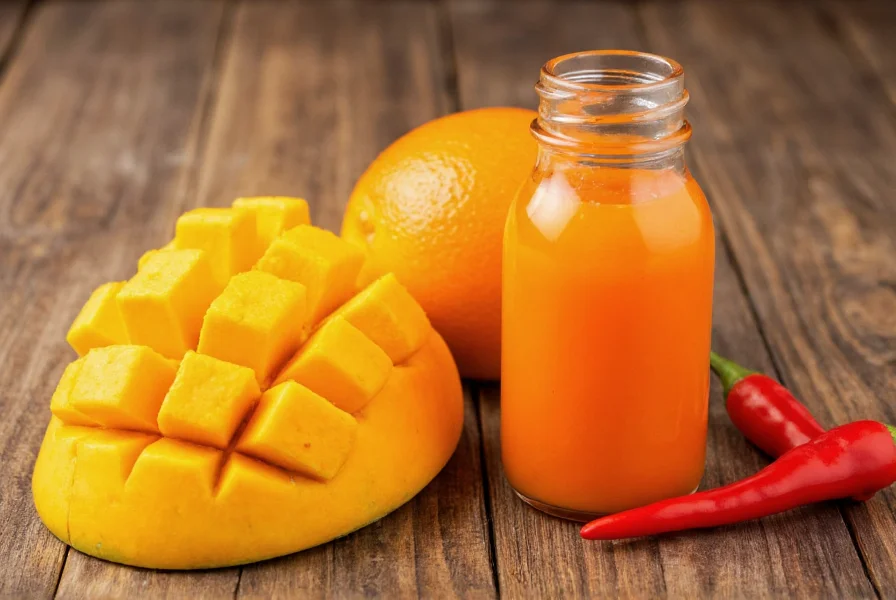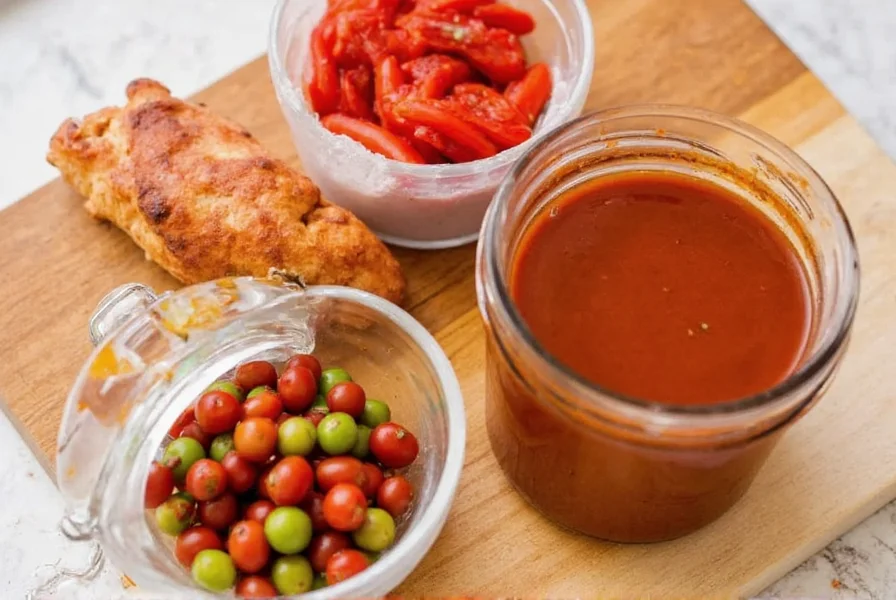Why Homemade Pepper Sauce Beats Store-Bought
Creating your own pepper sauce gives you complete control over ingredients, heat levels, and flavor profiles. Unlike commercial sauces loaded with preservatives and artificial flavors, homemade versions use fresh peppers, natural vinegars, and quality spices. The fermentation process develops complex flavors while preserving beneficial probiotics often missing in mass-produced alternatives.
Essential Ingredients for Perfect Pepper Sauce
Understanding your core components ensures consistent results. The holy trinity of pepper sauce includes:
- Peppers - Choose based on desired heat (Scoville scale) and flavor notes
- Acid - Vinegar (white, apple cider, or rice) or citrus juice for preservation
- Flavor Enhancers - Garlic, onions, fruits, or spices to balance heat
| Pepper Type | Scoville Units | Flavor Profile | Best Sauce Type |
|---|---|---|---|
| Jalapeño | 2,500-8,000 | Grassy, bright | Salsa verde, beginner sauces |
| Habanero | 100,000-350,000 | Tropical, citrusy | Caribbean-style sauces |
| Serrano | 10,000-23,000 | Sharp, herbal | Mexican hot sauces |
| Ghost Pepper | 855,000-1,041,427 | Smoky, fruity | Extreme heat sauces |
Classic Jalapeño Pepper Sauce Recipe
This beginner-friendly recipe yields a versatile sauce perfect for tacos, eggs, or pizza. The natural sweetness of roasted jalapeños balances beautifully with garlic and lime.

Ingredients
- 12 oz fresh jalapeños (stems removed)
- 4 garlic cloves
- 1 cup distilled white vinegar
- 1 lime (juiced)
- 1 tsp salt
- 1 tsp sugar
Instructions
- Roast jalapeños and garlic under broiler for 8-10 minutes until blistered
- Transfer to sealed container for 10 minutes to steam (eases peeling)
- Remove skins and seeds (keep seeds for extra heat)
- Combine all ingredients in blender
- Blend until completely smooth (2-3 minutes)
- Pour through fine mesh strainer
- Bottle in sterilized containers
- Refrigerate for 2 weeks to develop full flavor
Tropical Habanero Sauce with Mango
This Caribbean-inspired sauce combines habanero's intense heat with mango's natural sweetness. The fruit content creates a complex flavor profile that works equally well on seafood or grilled chicken.

Ingredients
- 6 habanero peppers (gloves recommended)
- 1 ripe mango (peeled and cubed)
- ½ cup apple cider vinegar
- 2 tbsp honey
- 1 tbsp fresh ginger (grated)
- 1 lime (juiced)
- 1 tsp salt
Instructions
- Boil habaneros for 3 minutes to reduce raw heat
- Combine all ingredients in high-speed blender
- Blend until completely smooth (3-4 minutes)
- Strain through fine mesh sieve
- Pour into sterilized bottles
- Refrigerate for 1 week before use
- Shelf life: 6 months refrigerated
Pro Tips for Perfect Pepper Sauce Every Time
Professional results require attention to detail. Follow these expert techniques:
- Heat control - Remove seeds and membranes for milder sauce; keep them for maximum heat
- Vinegar selection - Use 5% acidity vinegar for proper preservation; avoid flavored vinegars that overpower
- Safety first - Always wear gloves when handling hot peppers and avoid touching your face
- Flavor development - Allow sauces to mature in refrigerator for 1-2 weeks before judging final flavor
- Consistency - For thicker sauces, reduce vinegar by 25%; for thinner, increase by same amount
Storage and Shelf Life Guidelines
Proper storage ensures both safety and flavor preservation. Follow these recommendations:
- Refrigerate all homemade sauces immediately after bottling
- Use sterilized glass containers with tight-sealing lids
- Consume within 6 months for best flavor (most remain safe up to 1 year)
- Always use clean utensils to prevent contamination
- Discard if mold appears, smell changes, or container bulges
Troubleshooting Common Pepper Sauce Problems
Even experienced sauce makers encounter issues. Here's how to fix them:
- Too spicy? Add equal parts honey and lime juice, 1 tsp at a time
- Too thin? Simmer uncovered for 10-15 minutes to reduce liquid
- Off flavors? Balance with 1/4 tsp baking soda to neutralize excess acidity
- Separation? Shake well before use or add 1/8 tsp xanthan gum while blending
- Mold growth? Discard immediately - never attempt to salvage
Frequently Asked Questions
How can I make pepper sauce less spicy without losing flavor?
Add equal parts honey and lime juice, 1 teaspoon at a time, until desired heat level is reached. The acidity and sweetness balance the capsaicin without diluting flavor. Alternatively, blend in roasted bell peppers which add body without introducing new flavors.
What's the best way to preserve homemade pepper sauce?
Proper preservation requires both acidity and refrigeration. Use vinegar with at least 5% acidity, maintain proper pH below 4.6, and always refrigerate. For longer storage, process filled bottles in a boiling water bath for 15 minutes to create a vacuum seal, then store in a cool, dark place for up to 1 year.
Can I use dried peppers instead of fresh in pepper sauce recipes?
Yes, dried peppers work well but require rehydration. Soak 1 ounce dried peppers in 2 cups hot water for 30 minutes, then blend with other ingredients. Note that dried peppers often have more concentrated heat, so start with half the amount you'd use fresh and adjust to taste. Ancho, guajillo, and chipotle peppers work particularly well in dried form.
Why does my homemade pepper sauce separate after a few days?
Separation occurs when emulsification fails. To prevent this, ensure thorough blending (3-4 minutes in high-speed blender), add 1/8 teaspoon xanthan gum during blending, or include a small amount of tomato paste which acts as a natural stabilizer. Always shake well before use if minor separation occurs.
How long should I let pepper sauce ferment for best flavor?
For non-fermented sauces, refrigerate for 1-2 weeks to allow flavors to meld. For fermented sauces, the ideal timeframe is 7-14 days at room temperature (68-72°F) with daily burping of the container. Longer fermentation (beyond 21 days) develops more complex flavors but reduces bright pepper notes. Always refrigerate after fermentation completes.











 浙公网安备
33010002000092号
浙公网安备
33010002000092号 浙B2-20120091-4
浙B2-20120091-4